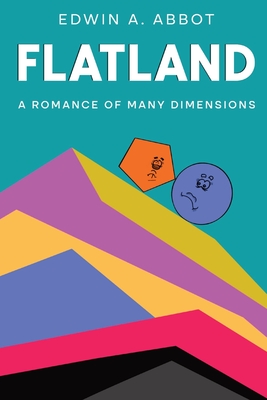Section 3: Concerning the Inhabitants of Flatland
bySection 3 explores the social structure of Flatland through both its geometry and strict hierarchy. Buildings in populated areas must follow a legal standard that ensures safety by limiting sharp angles, with pentagonal forms being the lowest acceptable design. This reflects a broader cultural shift, where even architecture mirrors the drive toward symmetry and refinement. Only in remote, undeveloped regions might a square house still be found—an architectural relic seen more as a curiosity than a functional space. Inhabitants themselves follow similar rules of progression, where one’s number of sides determines social class. A Circle stands at the top, nearly indistinguishable from a perfect curve, while Isosceles Triangles—barely distinguishable from straight lines—occupy the lowest ranks. Each class is shaped not just physically but by law, tradition, and expectation.
A full-grown figure in Flatland typically measures eleven inches across, rarely exceeding twelve. Women are straight lines, while soldiers and laborers are Isosceles Triangles with dangerously sharp vertices. The smaller the base, the more pointed and threatening their form, making some nearly indistinguishable from Women. Among the middle class are Equilateral Triangles, whose three equal sides give them a more balanced appearance and more stable place in society. Above them are the professional class—Squares and Pentagons—followed by the Nobility, which includes increasingly many-sided figures. As the number of sides rises, so does social rank, with the most elite—those indistinguishable from Circles—occupying the sacred priestly class. This geometric system doesn’t just govern appearance; it defines intelligence, status, and destiny. More sides imply more stability, intelligence, and control, making form an absolute measure of worth.
A unique law dictates that each male child should possess one more side than his father, theoretically allowing society to evolve through generations. A Square might father a Pentagon, and a Pentagon could eventually sire a Hexagon. This upward mobility, however, does not extend evenly across all classes. Soldiers and laborers—Isosceles by form—do not typically produce children with more than three sides. Their shapes are fixed by both biology and status. Yet there remains a sliver of hope. Through long-term service, discipline, and selective intermarriage arranged by the ruling Circles, it is possible to improve geometric form gradually. Slight modifications to the base and angle may yield more balanced offspring after several generations.
Although rare, a true Equilateral Triangle born from Isosceles parents is treated as a societal triumph. Such a birth is seen as a product of intentional discipline and intellectual advancement over many generations. It demands not just better marriage arrangements but the steady development of intelligence and restraint among ancestors. When such a child is born, the event is celebrated across entire regions. After passing rigorous inspections by the Social and Sanitary Board, the child is confirmed as a genuine Equilateral. With ritual ceremony, he is inducted into the class of Equilaterals and adopted by childless parents from that group. His biological parents, although honored, must relinquish him. Their sacrifice reinforces the belief that advancement belongs not to individuals but to the system itself.
This generational progression reflects Flatland’s unyielding commitment to order and form. The government rewards those who align with the system and punishes or excludes those who deviate. Yet, the system itself ensures that progress is slow and calculated. Advancement is possible, but it is designed to be difficult and earned over time. The rigid structure prevents chaos, but it also limits spontaneity and innovation. Intelligence is tied to shape, and shape is inherited or improved only under strict control. In Flatland, mobility isn’t determined by merit alone—it’s a precise result of geometry, bloodline, and obedience. The ultimate reward is absorption into the priestly class, where individuality disappears into perfection. It’s a society where everything—status, success, even parenthood—is measured in sides.


